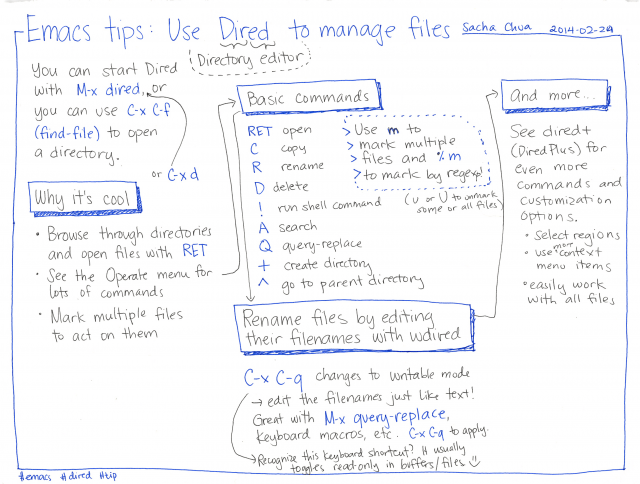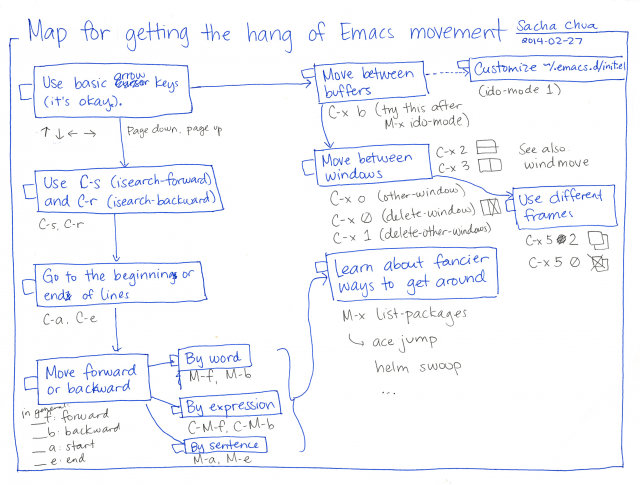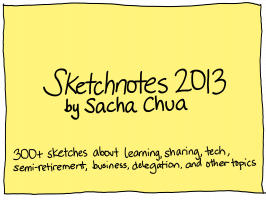More Emacs drawings: Dired, moving around
Posted: - Modified: | emacsDired is the Emacs directory editor. You can get to it with C-x C-f (find-file) if you specify a directory. C-x d (dired) works too. Dired makes it easy to do batch operations on files. One of the niftiest features that you might not even think of looking for, though, is the ability to make a Dired buffer editable using C-x C-q (dired-toggle-read-only). Then you can use replace-regexp, keyboard macros, and all sorts of other ways to change filenames. When you switch back out of editing mode with C-x C-q, the files will be updated.
Here's a cheat sheet for working with Dired.
Also, bjonnh suggested making a cheat sheet for movement commands. I use the M-b, M-f, C-M-b, and C-M-f shortcuts a lot when working with Emacs Lisp. C-a and C-e are great too.
If you use evil-mode because you're used to Vim shortcuts, this cheat sheet won't be useful to you, but maybe I can make an evil-mode cheat sheet someday.
In other news, I'm slowly becoming the kind of person who can understand SmartParens. I'm getting the hang of slurp and barf, but the rest of it still boggles me. Someday!



